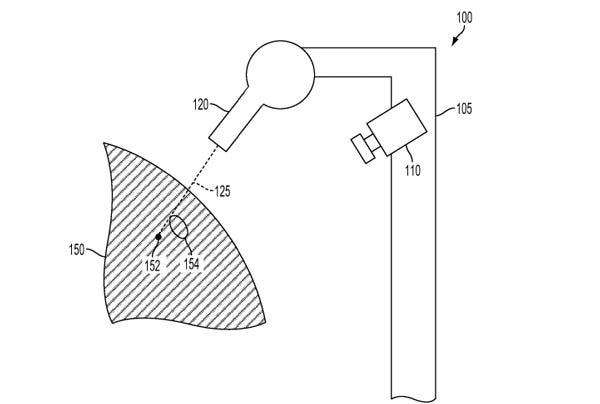Google Files Patent for Surgical Laser Technology
December 2, 2015
A recently published Google patent describes a laser ablation device with an active tracking system that allows the laser to work even when a patient is moving.
Nancy Crotti
|
An illustration from Google's patent application for the laser ablation device |
Google's foray into medical technology appears to be continuing. The company, which now has a sister Google Life Sciences business operating under its Alphabet parent company, has applied for a patent for a laser ablation surgical device.
"The high-energy beam can be very narrow, enabling the ablation of very small, precisely targeted tissues," says the recently published patent application, which Google filed in May 2014 with the U.S. Patent Office.
Google's interest in improving surgical tools is well-known. Early this year, Johnson & Johnson's Ethicon subsidiary forged a partnership with Google to advance the field of surgical robotics. The focus is on creating new robotic surgery tools that integrate best-in-class medical device technology with robotic systems, imaging, and data analytics.
When it comes to the laser ablation device, its active tracking system includes an imager configured to image the temperature of a biological tissue, with a heating laser configured to heat regions of the biological tissue, according to an abstract in the patent application.
"The imager locates high-temperature regions of the biological tissue, and the heating laser is controlled to point toward target regions of the biological tissue based on the located high-temperature regions," the application's abstract says.
The active tracking system is meant to enable a heating laser to continuously heat a target region of a biological tissue even when the target region moves relative to the heating laser.
"The active tracking system could allow one or more target regions of a biological tissue to be `tagged` with heat by the heating laser and to be tracked even when the one or more target regions move relative to the heating laser," the application's abstract says.
The application also mentions devices and methods for operating such active tracking systems, including a camera configured to detect infrared light with an approximate wavelength 9 to 14 mm, received from the biological tissue.
Google's forays into medical technology also include glucose monitoring, a prescription-only, health-tracking wristband, a tremor-countering spoon to assist Parkinson's patients, and other devices.
There's also a partnership with the American Heart Association to spend a total of $50 million over the next five years on tackling cardiovascular disease. The money, $25 million from each organization, will go toward a single to-be-determined research project.
Nancy Crotti is a contributor to Qmed and MPMN.
Like what you're reading? Subscribe to our daily e-newsletter.
About the Author(s)
You May Also Like



